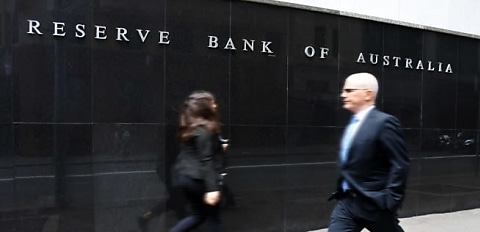The central bank has released its schedule of meeting dates for its eight meetings in 2024.
As previously announced, the Reserve Bank board will meet eight times each year from February 2024, as opposed to the current 11 meetings.
The meetings will be longer than is currently the case, typically starting on Monday afternoons and then continuing the following morning.
According to the outgoing governor Philip Lowe, “the less frequent and longer meetings will provide more time for the board to examine issues in detail and to have deeper discussions on monetary policy strategy”.
The outcome of the meeting will be announced at 2:30 pm on the second day and the governor (who has now been confirmed as Michele Bullock) will hold a media conference at 3:30 pm.
The minutes of the monetary policy meeting will continue to be published two weeks after each meeting.
The quarterly Statement on Monetary Policy (which will be delivered by the board, rather than the governor) will be released at the same time as the outcome of the board meeting in February, May, August, and November. A media conference will be held following each decision.
The 2024 Reserve Bank board meetings are as follows:
- 5–6 February
- 18–19 March
- 6–7 May
- 17–18 June
- 5–6 August
- 23–24 September
- 4–5 November
- 9–10 December
What else is the RBA doing?
The central bank decision to drop its meeting frequency came following a wide-ranging review, “An RBA fit for the future”.
Responding to the review earlier this month, the central bank said it would undertake the following 10 actions:
- From 2024, the board will meet eight times a year, rather than 11 times as is currently the case. Four of the meetings will be on the first Tuesday of February, May, August, and November, with the others held in between. The exact dates for 2024 will be published soon.
- The board meetings will be longer than is currently the case, they will typically start on the Monday afternoon and then continue on the Tuesday morning. The outcome of the meeting will be announced at 2:30 pm on the second day, typically a Tuesday as is the case now.
- All board members will have the opportunity to attend an internal staff meeting some time before the board meeting. This will allow them to hear directly from, and ask questions of, a broader range of staff.
- The post-meeting statement announcing the decision will be issued by the board, not, as is currently the case, the governor.
- The governor will hold a media conference after each board meeting to explain the decision. The media conference is expected to be held at 3:30 pm.
- The quarterly Statement on Monetary Policy will be released at the same time as the outcome of the board meeting (in February, May, August, and November), rather than on the following Friday as is currently the case. Given this and other changes, we are reviewing the structure of this document.
- The board, rather than just the governor, will be the signatory to the Statement on the Conduct of Monetary Policy, which is the document that records the common understanding on monetary policy between the RBA and the Australian government. The new statement is expected to be finalised later this year.
- The board will oversee the bank’s research agenda as it relates to monetary policy and aspects of financial stability.
- The bank will continue with its current approach to climate change analysis, focusing on the implications of climate change for the economy, inflation, and the financial system.
- The board will work with the Treasury to undertake five-yearly open and transparent reviews of the monetary policy framework.
Last week, it was confirmed that the RBA’s deputy governor, Ms Bullock, will become the next governor of the RBA.
She will become the first female governor of the RBA when she takes over the role from Mr Lowe, who will end his seven-year term in September.
Her new role will begin on 18 September and run for a seven-year term.
Speaking after the appointment announcement was made last week, Ms Bullock said: “I am deeply honoured to have been appointed to this important position. It is a challenging time to be coming into this role, but I will be supported by a strong executive team and boards.
“I am committed to ensuring that the Reserve Bank delivers on its policy and operational objectives for the benefit of the Australian people.”
[Related: New RBA governor announced]
